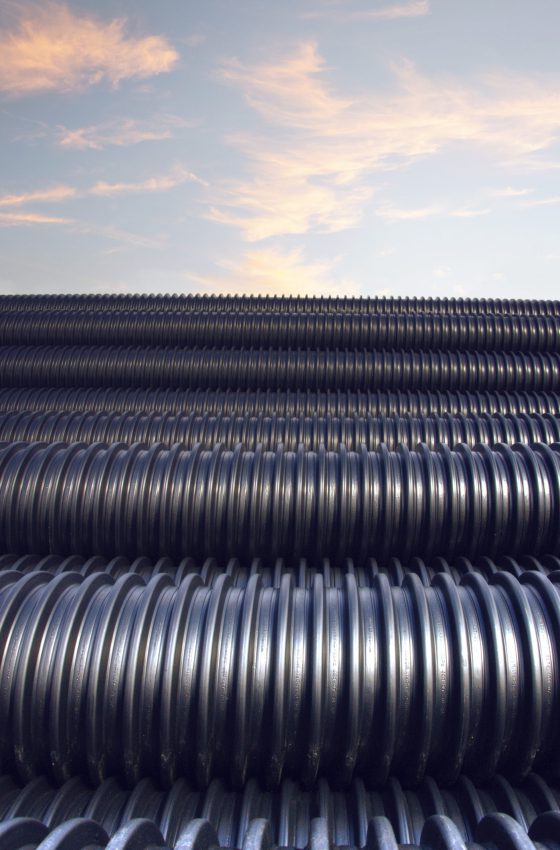Plastic Pipes
Plastic Pipes: A Versatile and Cost-Effective Infrastructure Solution
Plastic pipes are a versatile, cost-effective solution for a variety of infrastructure needs, including sewer systems, culverts, drainage, and more. They are typically made from polypropylene (PP) or high-density polyethylene (HDPE) in diameters up to 1.4 meters, featuring corrugated outer walls for high ring stiffness and smooth inner walls to ensure excellent flow conditions. Exceptionally light and easy to install, these pipes are renowned for their durability, corrosion resistance, and long service life, making them an ideal choice for projects in both urban and remote areas.
Cost-effective and mobile
These pipes are exceptionally lightweight, which significantly reduces transportation and installation costs and makes them easy to deliver even in remote or challenging locations. Because only simple, light machinery is needed, projects can be completed more quickly, and the overall expenses remain lower compared to heavier, more traditional materials like concrete.
Optimal design
A corrugated or helically corrugated outer wall provides high ring stiffness and excellent load-bearing capacity, allowing the pipes to withstand road or railway traffic. At the same time, a smooth inner wall ensures optimal flow conditions, maintaining efficient hydraulic performance while minimizing friction and energy loss.
Durable in aggressive environments
Manufactured from corrosion-resistant plastics such as polypropylene or high-density polyethylene, these pipes are suitable for use in harsh soil or water conditions. They retain structural integrity even in temperature extremes—ranging from -30°C up to +93°C or higher for short-term exposures—ensuring a service life of over 100 years.
Easy to repair
Any damage can be fixed by welding on additional segments or creating elbows without compromising the overall performance of the system. Because plastic retains consistent properties over time, repair work remains straightforward, even on older installations.

Applications:
- Sewer systems and culverts – Ideal for city or rural sewage networks and water management.
- Roads and railways – Used under roads or rail lines to separate soft subsoils, stabilize structures, and manage drainage.
- Ecological passages – Enables safe animal crossings under highways or rail tracks.
- Forestry and agriculture – Serves as forestry culverts and agro-ventilation systems.
- Relining of old culverts – Cost-effectively rehabilitates existing infrastructure by inserting new pipe sections.
- Reservoirs and drainage – Facilitates construction of reservoirs, drainage systems, and riverbank protection.
- Mining and industrial sites – Tolerates uneven subsoil settlement, particularly in subsidence areas.
